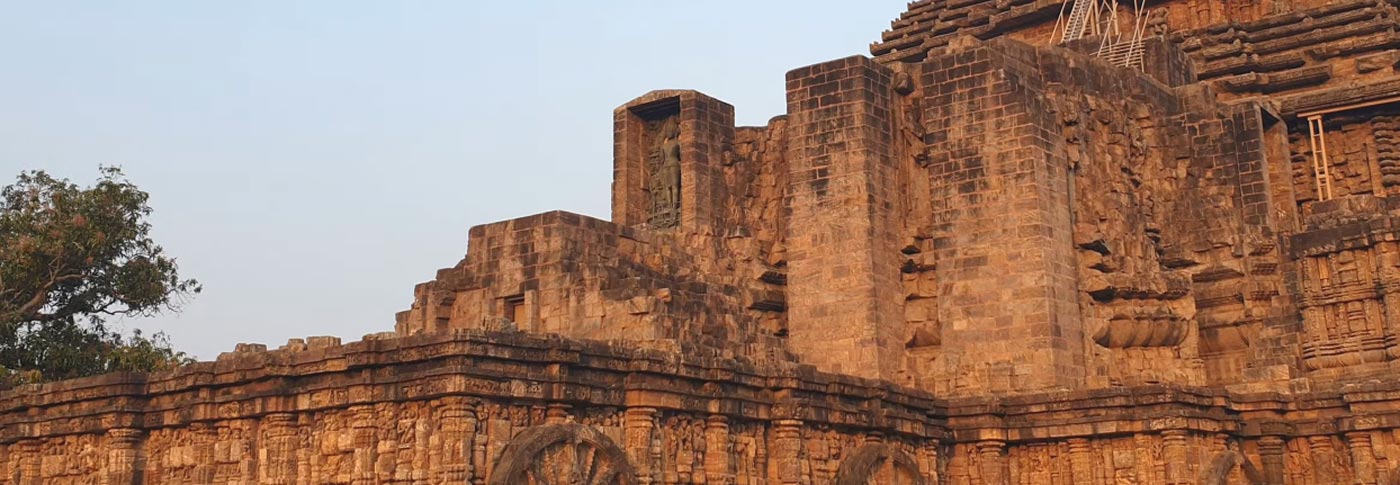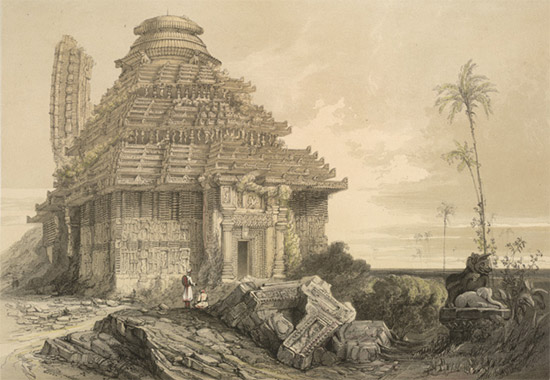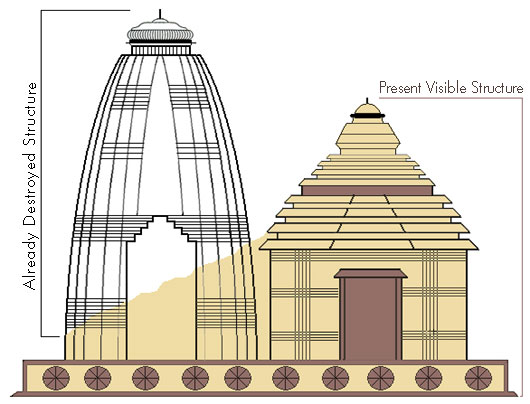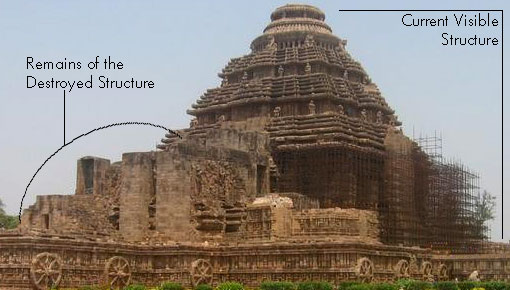

In the course of time, Konark along with its temples have lost their glories. The large structure of Konark Temple seen today is actually the Jagamohana (also known as Assembly hall, Audience hall or Mukhasala) of the temple. The main temple tower (also known as Deula or Garbha Griha or Vimana) which enshrined the presiding deity has fallen off and only the remains can be seen. It is very difficult to conclude as how long this temple stood in its full glory and the causes of its decay. However, there are many speculations on this. The exact date and reason for the fall of this magnificent monument is still in mystery. History is almost silent about it and scholars also differ in their opinions, but below evidence (a sketch by James Fergusson in 1847) shows that the main temple tower was partially standing in the 1800s.



Some of the speculations made for the possible cause of the fall of this magnificent temple are given below.
 Incomplete Temple
Incomplete Temple
It is opined by some historians that, due to the early death of the king Langula Narasimha Dev, builder of the Konarak temple, the construction of the temple had been left in a haphazard state. As a result of this, the incomplete structure eventually collapsed. But this view is unsupported by historical data. The records of Madala Panji of Puri Jagannath temple, as well as from some copper plates dated 1278 A.D., state that the king Langula Narasimha Dev reigned till 1282. Many historians are of the opinion that the construction of the Konark temple was completed between 1253 and 1260 A.D. So the argument that the temple collapsed due to non-completion during construction is not tenable.
 Load Stone
Load Stone
Legends describe a load stone on the top of the Sun temple. Due to its magnetic effects, vessels passing through the Konark sea were drawn to it, resulting in heavy damage. Other legends state that magnetic effects of the load stone disturbed ships' compasses so that they did not function correctly. To save their shipping, the Portuguese voyagers took away the load stone, which was acting as the central stone and keeping all the stones, and the iron columns used to hold them walls together, of the temple wall in balance. Due to its displacement, the temple walls lost their balance and eventually fell down. But there is no record of this occurrence in any historical records, nor is there any record of the existence of such a powerful load stone at Konark Temple.
 Kalapahada
Kalapahada
The most popular story about the root of the fall of Konark temple rests with the Kalapahada. According to the history of Orissa, Kalapahada invaded Orissa in 1508. He destroyed Konark temple, as well as a number of Hindu temples in Orissa. The Madala Panji of Puri Jagannath temple describes how Kalapahada attacked Orissa in 1568. Including Konark temple, he broke most of the images in most of the Hindu temples in Orissa. Though it was impossible to break the Sun temple of Konark, the stone walls of which are of 20 to 25 feet (7.6 m) thick, he somehow managed to displace the Dadhinauti (Arch stone) and thus made a way for the temple to collapse. He also broke most of the images and other side temples of Konark. Due to displacement of the Dadhinauti, the temple gradually collapsed and the roof of the Mukasala was also damaged, due to the stones falling down from the temple top.
 Earth Quake
Earth Quake
Some scholars are of the view that due to earthquake the temple fell down. It is also not impossible on the part of a strong earthquake to demolish such a large structure at a moment. But there is no proof in support of occuring such an earth quake in this area. There is also no sign of suppression of the foundation of the temple at any direction. Had there been any such a strong earth quake causing the fall of the Sun temple, it could have also created a devastation in Konark area. And such an occurrence could have been remembered by the people as they have remembered the story of Dharmapada, Ramachandi and Bisu Maharana. Nowhere there exists such a devastating statement.
 Thunderstruck
Thunderstruck
The arguments that the temple was affected due to Thunderstruck is also not acceptable. Since the temple walls are of 20 to 25 feet in thickness it is not at all possible on the part of any thunderstruck to disturb it in any manner.
Consequent upon, Orissa came under the Muslim administration in 1568 and there were constant attempts to destroy the Hindu temples. The Pandas of Puri, to save the sanctity of the Puri temple, took away the Lord Jagannath from the Srimandir and kept the image in a secret place. Similarly, it is said that the Pandas of Konark took away the presiding deity of the Sun temple out of the temple and put under sand for some years. Latter on the said image was removed to Puri and kept in the temple of Indra in the compound of the Puri Jagannath temple. According to others, the Puja image of the Konark temple is yet to be discovered. But others hold the view that the Sun image now kept in the National Museum, Delhi was the presiding deity of the Konark Sun temple.